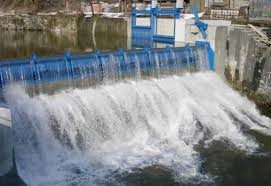ECA INSIGHT >>
Corporate PPAs aren’t just to make your green credentials shine
July, 2019
Corporate Power Purchase Agreements (PPAs) have mainly been used for renewables in competitive markets in the EU and the US, but they can be used to introduce a limited form of competition in countries that do not have formal electricity markets. Here we explore how this might work.
What are Corporate PPAs?
In its most typical form, a Corporate PPA is a long-term agreement between a renewable energy producer and a buyer. These contracts originally emerged in mid-2000s as a way to secure renewable electricity for companies such as Google who sought to demonstrate their corporate social responsibility credentials. Such PPAs can be structured as:
- Direct corporate PPAs: the electricity produced by the generator is directly contracted by the corporate buyer,
- Virtual or financial PPAs: where a bilateral contracts market does not exist, a contract is agreed whereby electricity supplied by the generator is paid for by the single buyer who then sells power to the corporate buyer generally at a premium price and the corporate buyer can then claim that the power it uses is green.
Why are they attractive?
As well as offering the possibility to claim green credentials, Corporate PPAs may also be attractive when a state-owned utility is struggling. PPAs can be beneficial for large industrial users operating in countries with frequent load shedding and willing to pay higher prices for secure electricity supply. Entering into a long-term Corporate PPA contract provides greater reliability of power supply and price predictability.
An additional advantage of power purchase agreements is that they reduce the involvement of governments. Over the years governments have become increasingly unwilling to provide guarantees for PPAs between state-owned utilities and new private generation projects, making new investments riskier for project developers.
Who are they for?
The ultimate buyers of electricity and signatory to such Corporate PPAs, whether green or otherwise, are either/or:
- Large customers that would otherwise need to rely on expensive self-generation such as mines and cement plants.
- Medium to small customers who aggregate their power demand and jointly negotiate the terms of the contract.
How can this work?
Corporate PPAs can be a surrogate for competition in markets where third party access to the electricity market is limited. In the absence of an adequate framework, the long-term power purchase agreement may be structured as follows:
- The consumer enters into an agreement to buy power from the national utility for a fixed period at an agreed price or price formula.
- The utility enters into an equivalent agreement to buy from the independent power producer (IPP) for a fixed period at an agreed price.
On top of the generation payment, the utility adds network use-of-system charges and balancing charges in its price to the consumer.
A case study of Zimbabwe – power supply ring fencing
An example of such an arrangement is provided by Zimbabwe which has faced power shortages for several years with regular load shedding. The introduction of competition in the power market was considered but the market remains dominated by the Zimbabwe Electricity Supply Authority (ZESA) family of companies including the single buyer (ZETDC).
Corporate PPAs were developed in an ad-hoc manner in order to secure reliable electricity supply to large consumers who would otherwise have been forced to use expensive diesel generation. An IPP entered into an agreement with ZETDC whereby it would sell to ZETDC and simultaneously, a large customer entered into a contract with ZETDC to purchase all of that power. The arrangement was feasible only for large customers with dedicated grid connections which enabled continuous supply during load shedding hours.
The scheme has subsequently been extended to help ZETDC pay for imported electricity in foreign currency. The country’s economic problems have meant foreign currency shortages; the mines export minerals in return for foreign currency and ZETDC is able to divert this to pay for imports and, in return, the mines are given priority electricity supply.
Figure 1: A mini hydro power plant operated by an IPP in Zimbabwe

Source: http://www.zbc.co.zw
Are there drawbacks?
The model described above is a way of introducing competition. It is likely to work best when the network utility is separated from the generation utility and the network utility is the single buyer (e.g. Malawi) and is not conflicted by having its own generation to ‘protect’.
A potential issue is the mismatch between the life span of large off-takers (which would determine the length of the agreement to buy power) and the time needed to recoup the power investment. This will have a bearing on mines in particular whose lives are determined by the size of the mineral resource. The mineral resource could be exhausted before the power plant investment is repaid, thereby potentially leaving the power investment stranded.
Another potential drawback is that a mine can be closed prematurely in the face of economic cycles or market trends affecting mineral or resource prices and making continued production unprofitable.
Is the Zimbabwe experience exportable?
Zimbabwe’s economic problems are unusual and its experience is unlikely to be repeated in other Southern African countries. Nevertheless, several countries in the region have experienced serious and regular load shedding in recent years including Malawi and Zambia and even South Africa. Although some of the countries in the region have introduced legislation that allows bilateral contracting and third-party access [1] in theory, in practice only Namibia has implemented bilateral contracting and, even then, only to a limited extent [2]. The opportunity does therefore exist in some countries and it is a very simple arrangement to implement that does not require complex regulations and sophisticated power trading software. The push for this is likely to come from large consumers anxious to avoid load shedding and/or to avoid the high cost of back-up diesel generation.
[1] Lesotho, South Africa and Zambia to name some.
[2] For power projects with a capacity of 2 MW or less.
